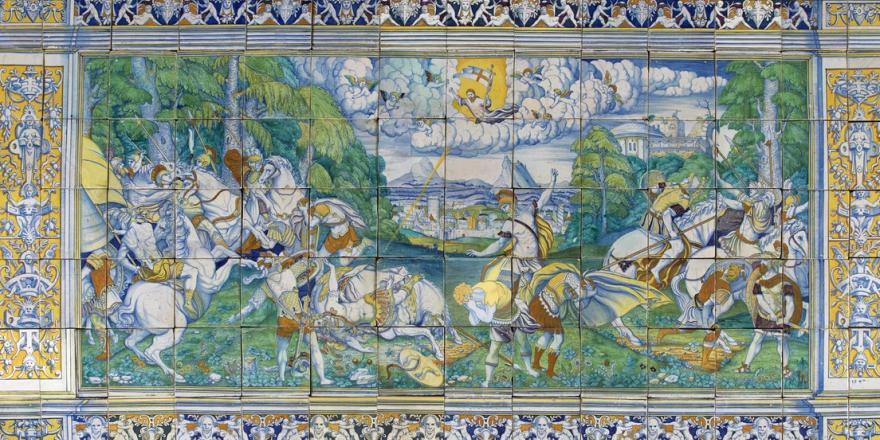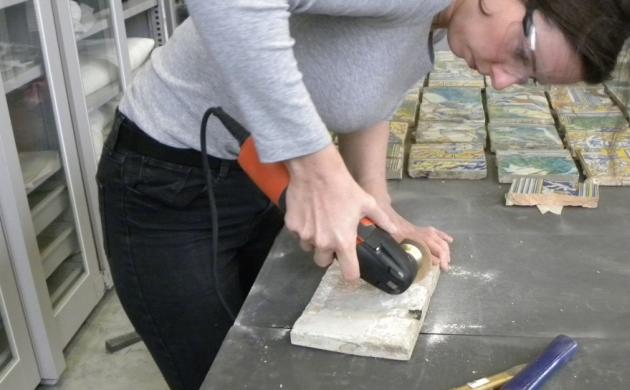It depicts a well-known Biblical scene: the moment when the (Roman) persecutor of Christians, Saul, is on his way from Jerusalem to Damascus and - blinded by a lightning bolt transmitted by God in the clouds above the scene - is thrown from his horse. His fellow travellers and their horses also react with terror and try to protect themselves or take cover. In the background of the wooded setting, a city (Jerusalem? Damascus?) is depicted. The fall, the vision, the message of Jesus leads to the conversion of Saul who from then on will proclaim the Christian faith as apostle Paul.
Design and realisation
The large and intact tile tableau (over 1 m high by 2 m wide) consists of 98 multicoloured square majolica tiles (multicoloured glazed earthenware). It shows the Biblical scene in a large rectangular plane surrounded by a richly decorated frame. The scene is the same as that in the now-lost painting by Francesco Salviati (1510-1563), known thanks to a 1545 engraving by Enea Vico (1523-1567).
The entire colour range of 16th-century Antwerp majolica painting has been applied here: tin oxide for the white ground layer, cobalt blue, copper green, orange, the characteristic yellow and even manganese purple. A transparent glaze over these colours gives a brilliant sheen to the final product. The overall decor of the scene is predominantly green in colour. It is used for the grassy plain in the foreground and for two curtains of leafy trees behind the groups of soldiers. The city, at the foot of two tall mountains in the background, and the widespread clouds above the scene create a sense of depth. The white colour of the horses and of the soldiers' clothing places them - the actors of the scene -, in the foreground.
The tiles in the upper and lower frames show repeating pairs of two or three putti supporting antique vases or grotesque masks. They are depicted on a blue and brown ground and painted as a continuous strip passing from one tile to the next, with each tile showing a different composition. Flanking yellow pilasters depict grotesque masks, vases and half-human figures in ironwork, clusters of
fruits and flowers.
Production
The 1547 tile tableau is a rare witness to early majolica production in Antwerp, a typical Renaissance phenomenon. It is the only fully preserved example from this period. It is a typical example of the original style of Antwerp production in which Venetian influence blends with the Southern Dutch decorative formal language and even French ornamental motifs.
The tableau is attributed to the 'Den Salm' atelier, founded in 1520 by Guido Andries (Guido di Savino), a Venetian majolica maker who was one of the founders of the majolica industry in Antwerp in the early 16th century. Thanks to its high-quality products, the workshop enjoyed great fame at home and abroad until the early 17th century. All these arguments show that the Saulus tableau is indispensable cultural heritage for Flanders.
‘The conversion of Saul’ can be admired in the permanent MAS exhibition ‘Freight’.
The tableau is included in the MAS collection under inventory number AV.1571.




